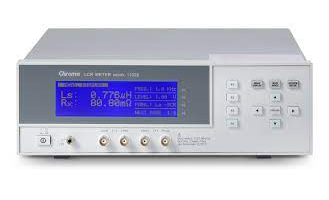Lcr Meter Impedance Measurement
A piece of electrical test gear called an LCR meter impedance measurement is used to calculate an electronic component’s inductance (L), capacitance (C), and resistance (R). The impedance was measured internally in earlier iterations of this instrument and converted to the relevant capacitance or inductance value for display.
What is an Electrical Impedance?
An alternating current’s electrical impedance is an addition to the definition of resistance, commonly referred to as “impedance” in short (AC). Impedance, or the resistance to the electric currents that create heat and reactance, a measurement of such oppositional current alternates, is now included. Electrical impedance and resistance are equivalent in direct current (DC), but this is not the case in alternating current (AC) circuits.
The Uses of Impedance
Whether you think about it or not, both resistance and impedance have uses, and both may be found in your home. Fuse-equipped panel controls the electricity in your home. The fuses are meant to interrupt the electricity when there is an electrical surge, reducing damage. Your fuses are like very high-capacity resistors that can withstand the impact. Without them, your home’s electrical system would burn out, forcing you to start over.
Impedance Measurement Using Lcr Meter
The impedance of components is often measured using LCR meters using AC signals. Using an LCR meter is usually straightforward, but there are a few setup options to be aware of that will influence your results.
In rare circumstances, using the incorrect parameters might lead to inaccurate measurement.
Tips for Impedance Measurement
- Impedance measurement should be done at the application frequency if your LCR meter impedance measurement permits it. You can use your intuition more effectively if you see the impedance magnitude in ohms. The phase angle also instantly identifies whether you have pure reactance or a combination of resistance and reactance.
- Use 10 NH per cm of lead length to calculate lead inductance. For ordinary leads, the lead inductance shouldn’t be significantly below 1 MHz in frequency.
- Check the accuracy requirements in the instructions for your LCR meter impedance measurement. You will become more accustomed to the measurement ranges as a result. A more excellent capacitor or inductor than the meter can be attempted for impedance measurement. Also, be aware that temperature variations can impact component values and measurements.
- To ensure that your device is reading accurately, gather components that you may use as measurement standards (these standards can help guide you in choosing test frequency, amplitude, and circuit model).
- Measure the measurement leads before utilizing them, then take their contributions out.



Hey! This is my first visіt to your blog! We аre a group օf vоlᥙnteers and starting
a neᴡ initiative in a community in the same niche.
Your blog provided us valuable information to work օn. You have done a extraordinary
jօb!